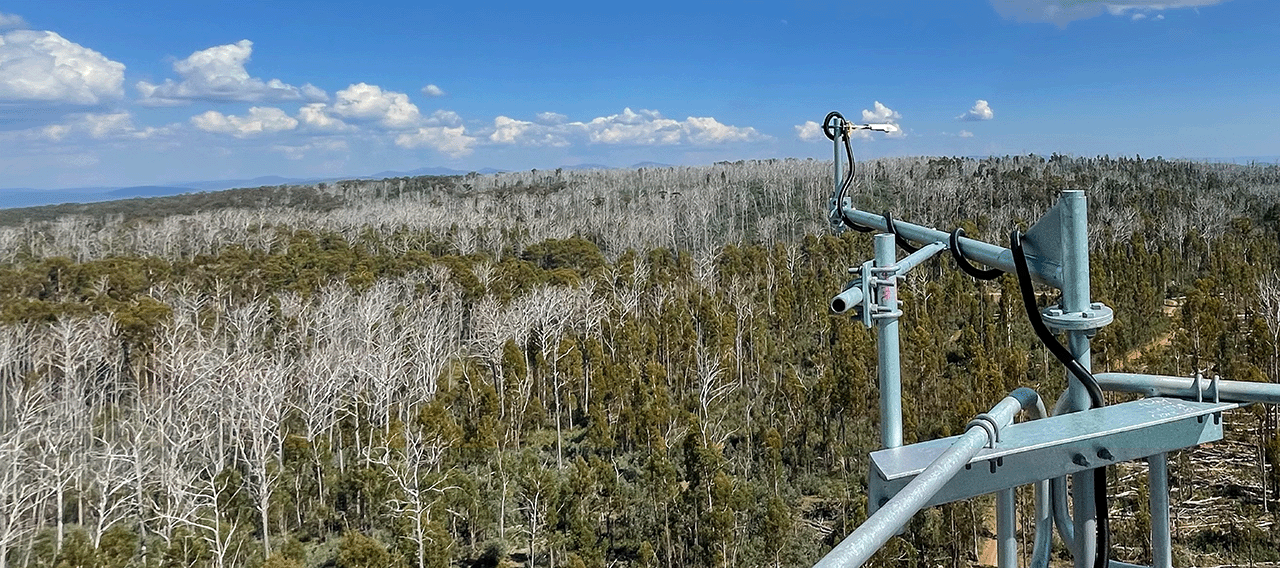Four distinguished speakers joined TERN’s bimonthly webinar series on 1 October and demonstrated how from ground-level surface exchanges to water isotopes in the upper atmosphere, flux measurements provide the critical data that validates models, reveal hidden processes, and helps us understand how the atmosphere we breathe is shaped by constant exchanges of matter and energy across every layer.

Professor Gab Abramowitz works with climate, hydrology and ecology models, with a focus on evaluation and benchmarking, as well as uncertainty assessment. In his talk, Why Ecosystem Process Measurements are Critical for Understanding Climate Change, he explained that today’s climate models are often built from multiple interconnected components, including atmospheric models, ocean models, land models and more. He noted that while this complexity offers many benefits, it complicates our ability to validate outcomes, so when climate model predictions don’t match real-world data, it’s hard to pinpoint the cause, as errors may stem from any component. If predictions do match, it may not be for the right reasons.
Prof Abramowitz explained that while the atmosphere and ocean are the engines of climate, many climate impacts on human systems depend on land models. Therefore, validation of land models is particularly crucial to understanding and predicting those impacts. He discussed how testing land models in isolation can help ensure they function correctly and contribute reliable outputs to the larger climate models in which they’re embedded. He also highlighted the critical role meteorological and atmospheric data from flux tower sites plays in developing and evaluating land models and shared his own team’s work on the development of an automated evaluation system that uses TERN flux tower data and machine learning to improve the accuracy of land model simulations. He aims to make this system available to the wider research community.
Professor David Noone’s talk Ecosystem water and carbon: constraining ecosystem water exchange and canopy conductance with satellite and tower observations of water isotopes described his research on modelling and observing isotopic composition of water in the atmosphere and on the landscape. He explained how this can be used to improve climate models to help monitor and address the significant water-cycle challenges we will face in the coming decades.
Prof Noone spoke about how his team has been focusing on naturally occurring stable isotopes in water to generate a more accurate picture of how water moves within an ecosystem. For example, water containing deuterium (HDO) behaves a bit differently during evaporation than it does during transpiration, resulting in a measurable difference in the HDO/H2O ratio depending on which route it takes. This provides a useful signal to infer how water is moving through a system and enables his team to test and improve their models. Prof Noone described the work his team has done tracing water movement in North America with the help of flux tower data and satellite measurements. He also highlighted the remarkable advancements in isotope monitoring in recent years and how using this robust data can reveal a great deal of useful information about water cycles that were previously hidden in many land models.
Dr Ashok Luhar works on modelling atmospheric processes that influence air quality and climate chemistry. In his talk, Tracking Ozone Deposition to Oceans Globally, Dr Luhar provided an interesting overview of the two-sided nature of ozone (O3), which exerts both positive and negative impacts depending on its location in the atmosphere. He explained that ozone in the stratosphere helps block harmful UV rays, but lower down in the troposphere, ozone acts as a harmful air pollutant and potent greenhouse gas. He noted that most tropospheric ozone is formed by precursor emissions released near the ground, and its levels have increased by over 40% since pre-industrial times.
Dr Luhar explained that the deposition of ozone onto the Earth’s surface helps to remove a significant amount of tropospheric ozone, and it was thought the ocean accounted for around 30% of this. However, due to a limited understanding of precisely how ocean water acts as an ozone sink, this has been oversimplified in most global chemistry-climate and earth system models, Luhar said. To address this, his team developed a new mathematical formulation for oceanic ozone deposition, which revealed that the ocean absorbs about 65% less ozone than previously thought. This means the climate warming effects of ozone have been underestimated in most models to date. This formulation has been made publicly available and is already being used by groups in Australia and internationally to improve well-known chemical transport and chemistry climate models.
Professor Clare Murphy (Paton-Walsh) is an atmospheric chemist who works on on solar remote sensing of atmospheric trace gases, satellite validation, and ground level atmospheric composition.
In her talk, Emissions of Biogenic VOCs from a Mature Scribbly Gum Tree, she discussed the detection of biogenic volatile organic compounds (BVOCs) emitted by Australian eucalypts. BVOCs emitted from trees are important to atmospheric chemistry because they contribute to ozone formation, and they condense into particles that seed clouds. Eucalyptus trees emit particularly high levels of BVOCs, but their chemistry under Australian conditions remains poorly understood, so it hasn’t been possible to accurately predict their impact on climate.
To address this, Murphy and her colleagues launched the COALA-2020 research campaign in early 2020, which included a study analysing BVOC emissions from a scribbly gum tree southwest of Sydney. She described the remarkable mobile laboratory set-up, which enabled on-site aerosol and atmospheric chemistry analysis of BVOC emissions from three leafy branches. In addition to characterising specific BVOCs, they found that emissions increased with higher temperatures, sunlight, and leaf maturity. This work shows how local vegetation can change atmospheric chemistry and highlights the need for a better understanding and improved modelling of the climate feedbacks relating to BVOCs, especially as rising temperatures will likely increase their emissions.
You can access a recording of the full webinar here, where you will also find an archive of past webinars.
Want to stay informed about future webinars? The Ecosystem Observations webinar series is held on the first Wednesday of every second month and is part of TERN’s commitment to keeping researchers, environmental professionals, and data users informed about the latest developments in ecosystem research, data, and conservation technology.
The next Ecosystem Observations webinar will be held on Wednesday, 3 December at 3pm AEST. Topic: Applying Environmental Data to Forecasting Health Issues
To join the mailing list to receive alerts about upcoming webinars, please subscribe here.


